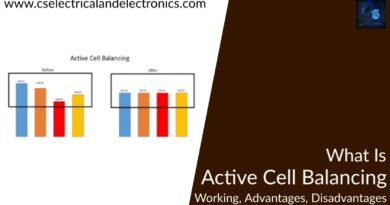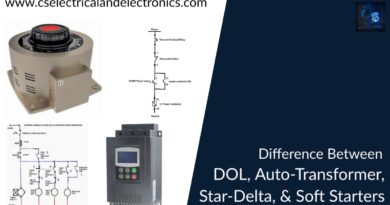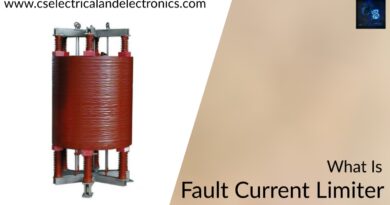What Is Vehicle To Vehicle Communication, Can Help People?
Hello guys, welcome back to our blog. Here in this article, we will discuss what is vehicle to vehicle communication is, how vehicle-to-vehicle communication is helpful for the public, and working of it.
If you have any electrical, electronics, and computer science doubts, then ask questions. You can also catch me on Instagram – CS Electrical & Electronics.
Also, read the following:
- Wireless Charging Stations Working, Types Of Compensation
- What Are MAAB Guidelines In MATLAB Simulink, Purpose Of It
- Top 50 Advance Level Embedded Systems Interview Questions
Vehicle To Vehicle Communication
The technology known as vehicle-to-vehicle communication (V2V) enables automobiles to talk with one another over a wireless network. Vehicles can communicate in real time about their position, speed, direction, and other pertinent information thanks to this technology, which may increase road efficiency and safety.
Dedicated short-range communication (DSRC) technology, which makes use of a particular frequency band to let vehicles communicate with one another over a distance of up to 1,000 feet, is what V2V communication is based on. This technology can be used to optimize traffic flow and lessen congestion as well as to warn drivers of potential risks such as approaching vehicles, abrupt stops, and lane changes.
V2V communication, which also includes V2I communication and V2P communication between vehicles and pedestrians, is a crucial part of connected vehicle technology. These technologies have the potential to work together to build a more reliable and effective transportation system. V2V technology is still in its early phases of development, and it needs a lot of infrastructure and regulatory backing.
It is anticipated that V2V communication will be essential to the development of autonomous cars. V2V communication will allow autonomous cars to communicate information with one another as they become more common, such as road and weather conditions, which can help them make better decisions and prevent accidents.
The ability of V2V communication to improve drivers’ situational awareness is one of its key advantages. V2V communication alerts drivers to potential crashes and other hazards by transmitting information about surrounding vehicles, even if those hazards are not immediately apparent to the driver. This can save lives and avoid accidents.
Advanced driver assistance systems (ADAS) including lane departure warning, forward collision warning, and the adaptive cruise control can all be supported via V2V communication. These technologies can respond to changing road conditions more intelligently by exchanging data with other vehicles, enhancing road safety and productivity.
The United States Department of Transportation (DOT) has proposed a rule requiring that all new light-duty cars be outfitted with V2V communication equipment in order to facilitate the widespread use of V2V technology. Beginning in 2023, this regulation would compel automakers to incorporate DSRC technology into all new automobiles.
Although there are some worries about how V2V communication would affect privacy and security, its proponents contend that the advantages of increased efficiency and safety outweigh any potential disadvantages. V2V technology is anticipated to become more crucial to the future of transportation as it develops and gets better.
The public can benefit from V2V communication in a number of ways. Here are a few advantages:
01. Increased Safety: By warning drivers of potential risks like oncoming traffic or people on their route, V2V communication can aid in preventing accidents. V2V communication can lower the chance of crashes and increase road safety by giving drivers more knowledge about their surroundings.
02. Improved Traffic Flow: By giving drivers access to real-time traffic information, V2V communication can assist ease traffic congestion. V2V communication can assist shorten travel times and enhance traffic flow by warning vehicles of congestion and recommending alternate routes.
03. Improved driving experience: V2V technology can improve driving experiences by giving drivers access to real-time data on traffic, weather, and other pertinent factors. Drivers’ overall driving experiences can be enhanced and judgments made with greater knowledge thanks to this.
04. Efficiency gain: By requiring less time and resources to convey people and commodities, V2V technology can also increase the effectiveness of transportation networks. V2V technology can aid in lowering fuel usage and enhancing overall efficiency by enhancing traffic flow and minimizing congestion.
In general, V2V communication can contribute to the development of a public transportation system that is safer, more effective, and more fun. The advantages of the technology are anticipated to increase as it continues to develop and expand.
Working of Vehicle to Vehicle Communication
Vehicles can communicate data with each other through a wireless network thanks to V2V communication. Dedicated short-range communication (DSRC) technology, which works on a special frequency band set aside for this purpose, is often the foundation of communication.
Here is a general description of how V2V communication functions:
01. Data exchange: When two or more vehicles equipped with DSRC technology are in close proximity to one another, data exchange across the wireless network starts to happen. Information on the vehicle’s speed, direction, location, and other pertinent data might be included in the data exchanged.
02. Information processing: The cars utilize their onboard computers and algorithms to process the data after it has been shared. This can entail using data analysis to anticipate possible dangers, such as a car in your blind spot, or to improve traffic flow.
03. Driver notification: The system can alert the driver via visual or audible signals, such as a flashing light or a warning tone if a possible threat is identified. Additionally, the system is capable of corrective action, such as slowing down or using the brakes.
04. Network management: The V2V system may connect with other components of the transportation system, like traffic lights or road infrastructure, in addition to exchanging information with other cars. This can improve transportation efficiency and relieve congestion.
It is crucial to keep in mind that V2V communication is made to operate in real-time and is only meant to support a driver’s situational awareness and driving abilities, never to take their place. The system’s performance and dependability need to be improved and refined because the technology is currently in its early phases of development.
This was about “Vehicle To Vehicle Communication“. I hope this article may help you all a lot. Thanks for reading.
Also, read:
- 100 (AI) Artificial Intelligence Applications In The Automotive Industry
- 6G Technology: What To Expect Beyond 5G
- Advancements In 3D Printing Technology And It’s Future
- Advancements In Power Electronics For Energy Efficiency
- AI Artificial Intelligence Applications In Electric Vehicles | Future?
- AI Tools For Electronic Circuit Design, Which Is Best?
- Applications Of Artificial Intelligence (AI) In Renewable Energy
- Autonomous Vehicle, Benefit, Drawback, Purpose Of Autonomous Vehicle
Author Profile
- Chetu
- Interest's ~ Engineering | Entrepreneurship | Politics | History | Travelling | Content Writing | Technology | Cooking
Latest entries
 All PostsApril 19, 2024What Is Vector CANoe Tool, Why It Is Used In The Automotive Industry
All PostsApril 19, 2024What Is Vector CANoe Tool, Why It Is Used In The Automotive Industry All PostsApril 13, 2024What Is TCM, Transmission Control Module, Working, Purpose,
All PostsApril 13, 2024What Is TCM, Transmission Control Module, Working, Purpose, All PostsApril 12, 2024Top 100 HiL hardware in loop Interview Questions With Answers For Engineers
All PostsApril 12, 2024Top 100 HiL hardware in loop Interview Questions With Answers For Engineers All PostsMarch 22, 2024Driver Monitoring Systems In Vehicles, Working, Driver Sleepy Alert
All PostsMarch 22, 2024Driver Monitoring Systems In Vehicles, Working, Driver Sleepy Alert








